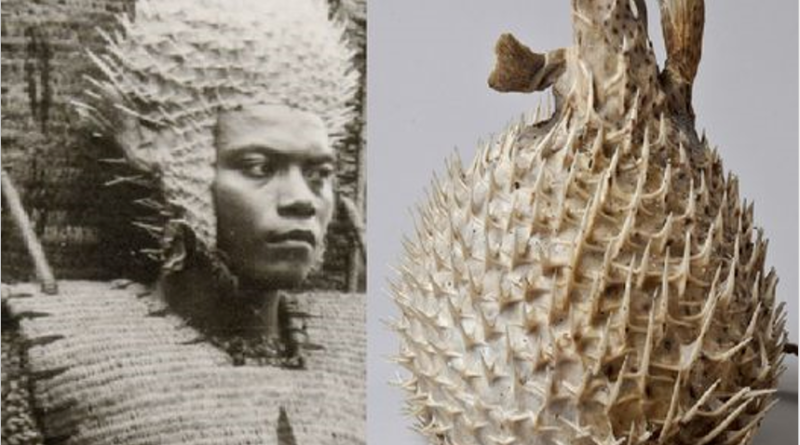The Fascinating Armor of Kiribati Warriors: Pufferfish Helmets of the 19th Century
In the 19th century, the warriors of Kiribati, a remote Pacific island nation, displayed a unique form of armor unlike anything seen elsewhere. Known as te barantauti, these helmets were crafted from the dried skins of pufferfish (also known as porcupine fish), their sharp spikes providing a natural layer of defense. This remarkable headgear, as seen in preserved artifacts and historical photos, reflects the ingenuity and adaptability of the Kiribati people, who used the resources available in their environment to create functional and intimidating warrior gear.

The process of making these helmets was both skillful and symbolic. Pufferfish, with their tough, spiky exterior, offered an ideal material for protection. Once dried, the skins retained their formidable spikes, which could deter close-range attacks. Warriors would wear the te barantauti with pride, its fierce appearance likely striking fear into their enemies while providing a practical barrier against blows.
This rare form of armor highlights the resourcefulness of Kiribati’s culture and demonstrates how human societies across the world have harnessed their environments to meet the demands of survival and warfare. Today, these artifacts are valued not only for their cultural significance but also as reminders of the inventive spirit of ancient island civilizations. The te barantauti stands as a powerful testament to the Kiribati warriors and their enduring legacy. 
